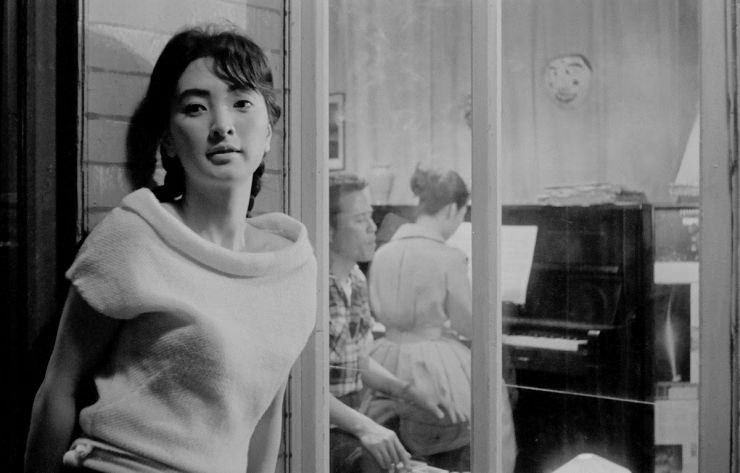
10 Asian Classic Films That We Should See Once in Our Life (At least…)
j7xi8kk January 30, 2025 ArticleLow Cost Flight Deals with Trip.com in Asia!(HK)
Asian cinema is a treasure trove of diverse and captivating films that often go unnoticed by mainstream audiences because of the filming industry structure. Today, we’re going to explore some classics that showcase the unique storytelling, rich cultural heritage, and different film-making techniques that define Asian cinema. These films have the power to change our vision of cinema and offer unforgettable experiences. Let’s dive into a list of 10 Asian classic films that you should see at least once in your life.
Asian cinema reflects the region’s diverse cultures, histories, and societal issues, offering unique perspectives and artistic innovation. By exploring these films, we gain insight into the rich tapestry of Asian life and the evolution of global film-making.
When we choose Asian cinema, it’s because it’s one of our favourites and we have more expertise in this area. However, watching movies from another continents doesn’t just mean being cool or underground; it’s a way to discover other worlds, other ways of filming, and, ultimately, a form of rebellion against the Hollywood industry. Today’s cinema is complex and produced in many different locations. And it’s a good exercise to discover films from different cultures and cinematographers.
Let’s discover what classic films from Asia can offer to our cinematic minds.
Our 10 Asian Classic Films Proposals
(Disclaimer: Please, consider this list as just a proposal. We have not chosen our 10 favorite films from Asian cinema, but rather proposed 10 movies that we consider can expand and enrich our vision of cinema. There are many more that could be included, but these are the ones we have decided to propose this time)
1. The Housemaid (1960, South Korea)

Director: Kim Ki-young
Main Actors: Kim Jin-kyu, Ju Jeung-ryu, Lee Eun-shim
Producer: Shin Sang-ok
Directed by Kim Ki-young, “The Housemaid” is a psychological thriller that delves into the dark side of human nature. The film’s intense narrative and stunning black-and-white cinematography make it a pioneering work in South Korean cinema. It blends elements of horror, drama, and social commentary, challenging viewers to question their perceptions of morality and family dynamics. “The Housemaid” has left a lasting impact on modern South Korean thrillers, making it a must-watch for fans of the genre.
2. Sansho the Bailiff (1954, Japan)

Director: Kenji Mizoguchi
Main Actors: Yoshiaki Hanayagi, Kinuyo Tanaka, Kyōko Kagawa
Producer: Masaichi Nagata
Kenji Mizoguchi’s “Sansho the Bailiff” is a poignant and visually stunning exploration of slavery and familial love. Set in feudal Japan, the film follows a family torn apart by a cruel slave trader and their struggle to reunite. With its exquisite cinematography and powerful storytelling, “Sansho the Bailiff” is a masterclass in human emotion and historical drama.
3. The Cloud-Capped Star (1960, India)

Director: Ritwik Ghatak
Main Actors: Supriya Choudhury, Anil Chatterjee, Gyanesh Mukherjee
Producer: Ritwik Ghatak
Directed by Ritwik Ghatak, “The Cloud-Capped Star” is a haunting and poetic family drama set against the backdrop of the Partition of Bengal. The film’s lyrical storytelling and evocative imagery create a profoundly moving experience that captures the essence of human resilience and tragedy. This Bengali classic is a testament to Ghatak’s unique cinematic vision and his ability to convey complex emotions through visual storytelling.
4. The Puppetmaster (1993, Taiwan)

Director: Hou Hsiao-hsien
Main Actors: Li Tien-lu, Lim Giong
Producer: Chiu Wen-Yen
Hou Hsiao-hsien’s “The Puppetmaster” is a mesmerizing and deeply personal exploration of Taiwanese history and identity. The film tells the story of a renowned puppeteer, Li Tienlu, and his journey through the tumultuous events of the 20th century. With its slow-paced narrative, stunning visuals, and intricate puppetry, “The Puppetmaster” offers a unique and captivating glimpse into Taiwan’s rich cultural heritage.
5. The Apu Trilogy (1955-1959, India)

Director: Satyajit Ray
Main Actors: Subir Banerjee, Kanu Banerjee, Karuna Banerjee (Pather Panchali); Pinaki Sengupta, Smaran Ghosal, Ramani Ranjan Sengupta (Aparajito); Soumitra Chatterjee, Sharmila Tagore, Alok Chakravarty (Apur Sansar)
Producer: Satyajit Ray
Satyajit Ray’s “The Apu Trilogy” is a landmark in Indian cinema and a masterclass in humanist storytelling. Comprising “Pather Panchali,” “Aparajito,” and “Apur Sansar,” the trilogy follows the life of Apu from his childhood in a rural Bengali village to his adulthood as a struggling writer. With its profoundly moving narrative, exquisite cinematography, and unforgettable characters, “The Apu Trilogy” is a timeless exploration of the human experience.
6. The Story of the Last Chrysanthemum (1939, Japan)

Director: Kenji Mizoguchi
Main Actors: Shōtarō Hanayagi, Kakuko Mori, Kōkichi Takada
Producer: Masaichi Nagata
Kenji Mizoguchi’s “The Story of the Last Chrysanthemum” is a heart-wrenching tale of love, sacrifice, and the pursuit of artistic perfection. Set in the world of kabuki theater, the film follows an actor’s struggle to achieve greatness and the woman who supports him. With its intricate set designs, exquisite costumes, and deeply emotional storytelling, this film is a testament to Mizoguchi’s mastery of the cinematic art form.
Japan Escorted Holiday Tour save up to 40% with Travelup.com Book Now!
7. The Big Road (1935, China)

Director: Sun Yu
Main Actors: Jin Yan, Li Lili, Zhang Zhizhi
Producer: Luo Mingyou
Sun Yu’s “The Big Road” is a powerful and visually striking exploration of Chinese nationalism and the struggle against imperialism. Set during the Sino-Japanese War, the film follows a group of road builders as they work to construct a vital supply route. With its dynamic editing, expressive cinematography, and stirring narrative, “The Big Road” is a landmark in Chinese cinema and a testament to the power of collective effort.
8. Aravindan’s Kummatty (1979, India)

Director: G. Aravindan
Main Actors: Madhu, Vinodini, Ramunni Nair
Producer: K. Ravindranathan Nair
G. Aravindan’s “Kummatty” is a enchanting and visually stunning exploration of childhood, imagination, and the magic of storytelling. The film follows a group of children as they interact with Kummatty, a mysterious and playful magician who brings their fantasies to life. With its lyrical narrative, evocative imagery, and whimsical atmosphere, “Kummatty” is a celebration of the wonders of childhood and the transformative power of the imagination.
9. Made in Hong Kong (1997, Hong Kong)

Director: Fruit Chan
Main Actors: Sam Lee, Yim Hui-Chi, Wenders Li
Producer: Andy Lau
Fruit Chan’s “Made in Hong Kong” is a gritty and realistic portrayal of life in Hong Kong, offering a unique perspective on the city’s underbelly. The film follows Moon, a young triad member who becomes entangled in a complex web of crime, love, and redemption. With its raw and unflinching narrative, striking visuals, and powerful performances, “Made in Hong Kong” provides a stark and unforgettable glimpse into the darker sides of Hong Kong’s urban landscape.
10. Floating Weeds (1959, Japan)

Director: Yasujiro Ozu
Main Actors: Nakamura Ganjirō II, Machiko Kyō, Hiroshi Kawaguchi
Producer: Tomoyuki Tanaka
Yasujiro Ozu’s “Floating Weeds” is a profoundly moving and visually stunning exploration of family, betrayal, and the inevitability of change. The film tells the story of a traveling theater troupe and the complex relationships that unfold between its members. With its intricate set designs, exquisite costumes, and deeply emotional storytelling, “Floating Weeds” is a masterclass in human drama and a testament to Ozu’s unique cinematic vision.
Asian cinema offers a wealth of hidden gems that deserve to be discovered and appreciated. From psychological thrillers to historical dramas, family sagas to magical realism, these films showcase the rich diversity and artistic innovation of Asian filmmaking. By exploring these classics, we gain a deeper understanding of the region’s cultural heritage and the power of cinema to transform our vision of the world.
So, grab some popcorn, dim the lights, and embark on a cinematic journey through Asia. You won’t be disappointed.
We would love to hear from you! Share your favorite Asian classic films in the comments below, and let us know which ones have left a lasting impression on you. Happy watching!
You may also like
Related
Discover more from Vibes Mgzn
Subscribe to get the latest posts sent to your email.
This site uses Akismet to reduce spam. Learn how your comment data is processed.




Leave a Reply